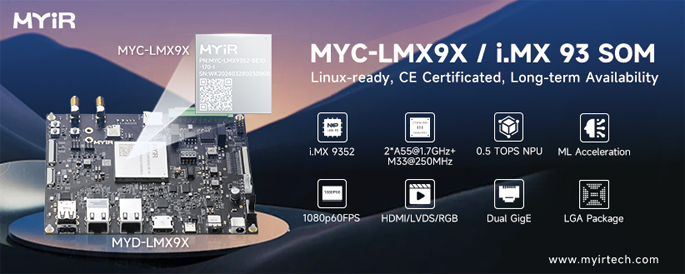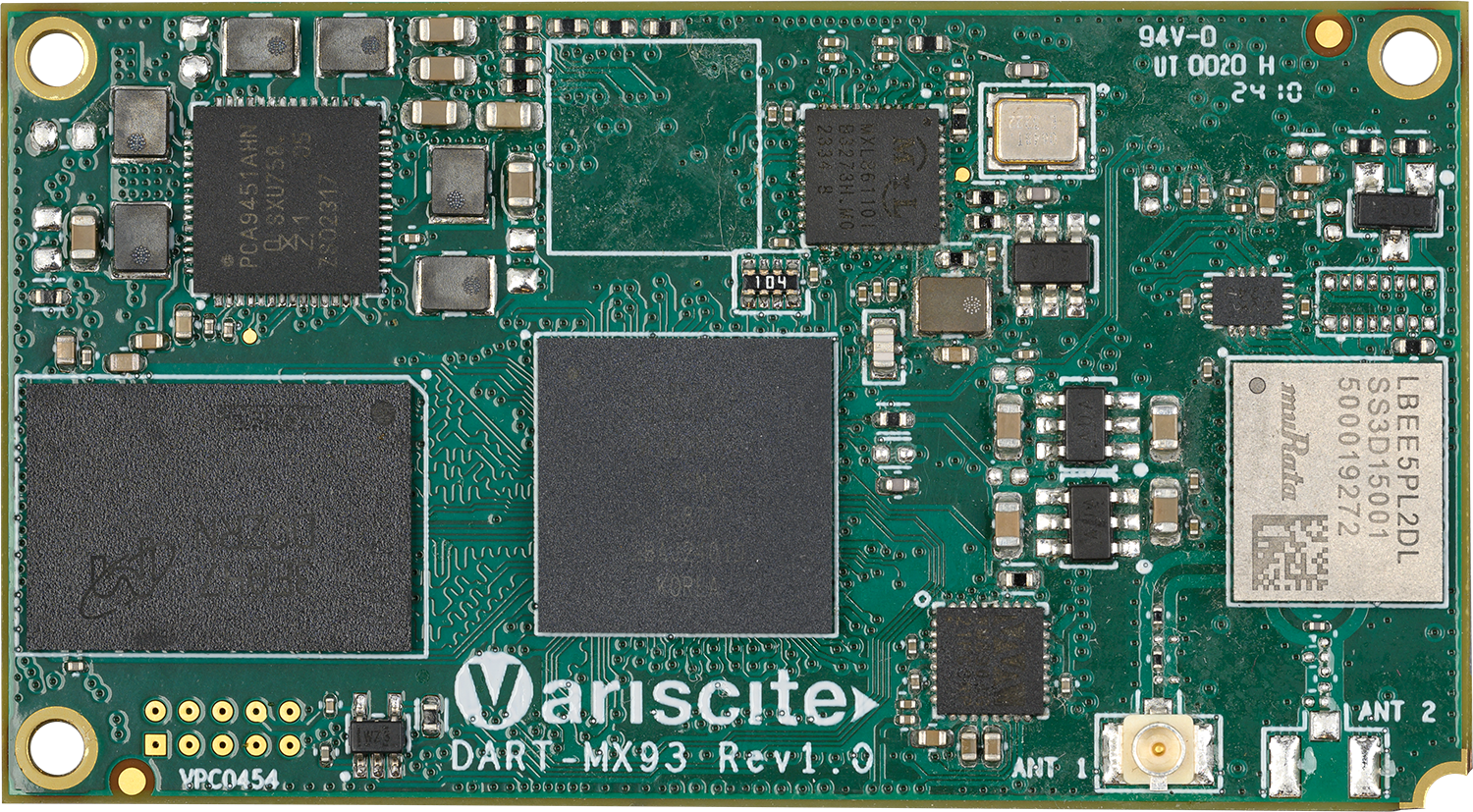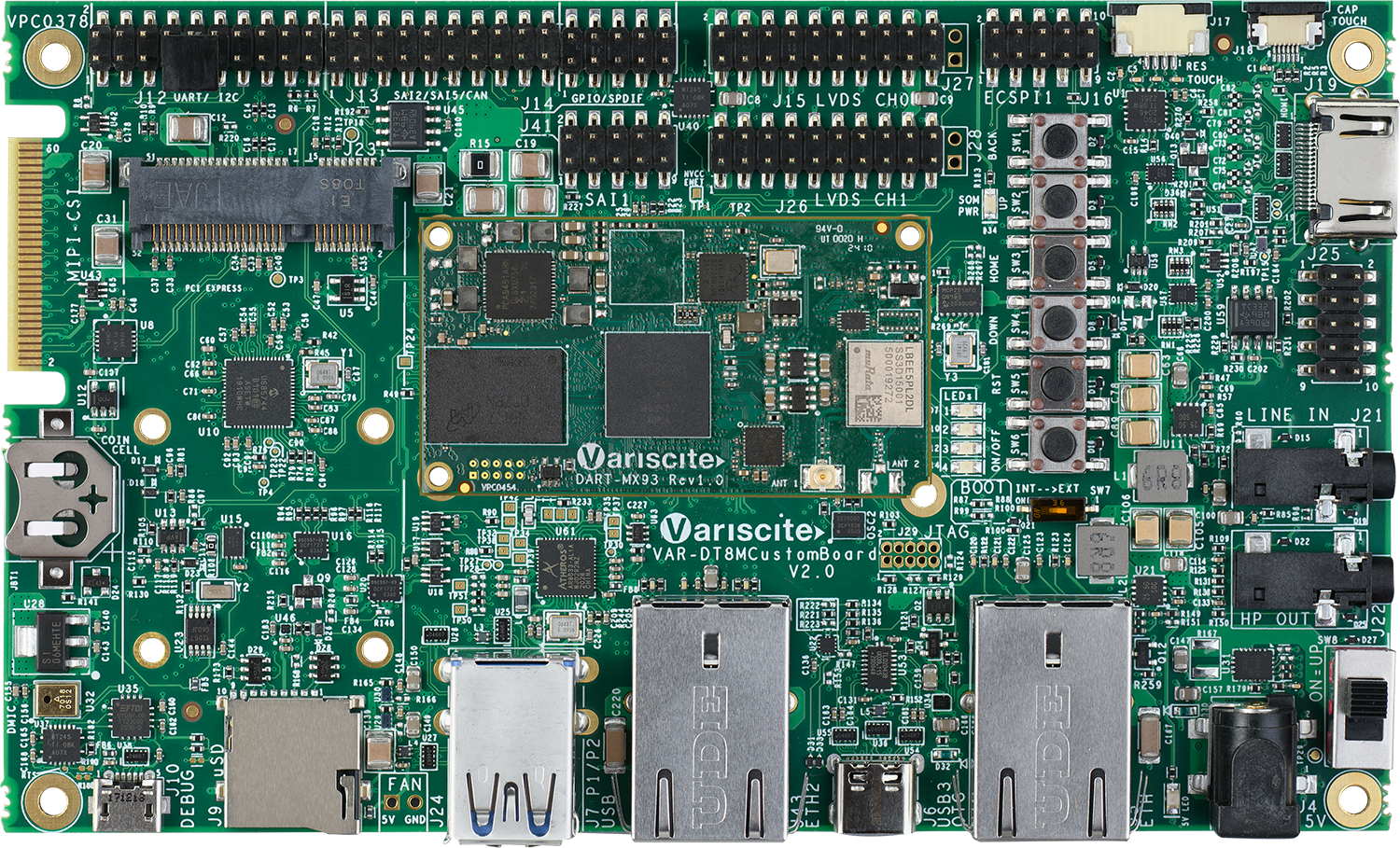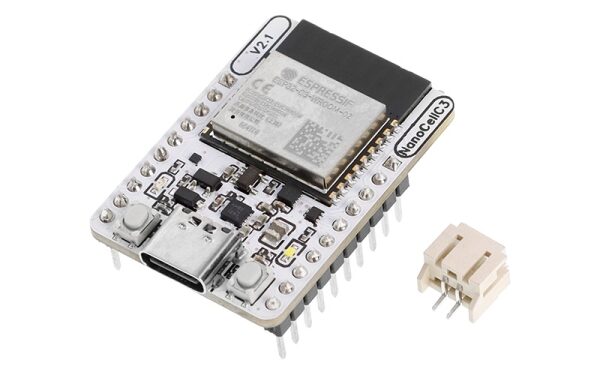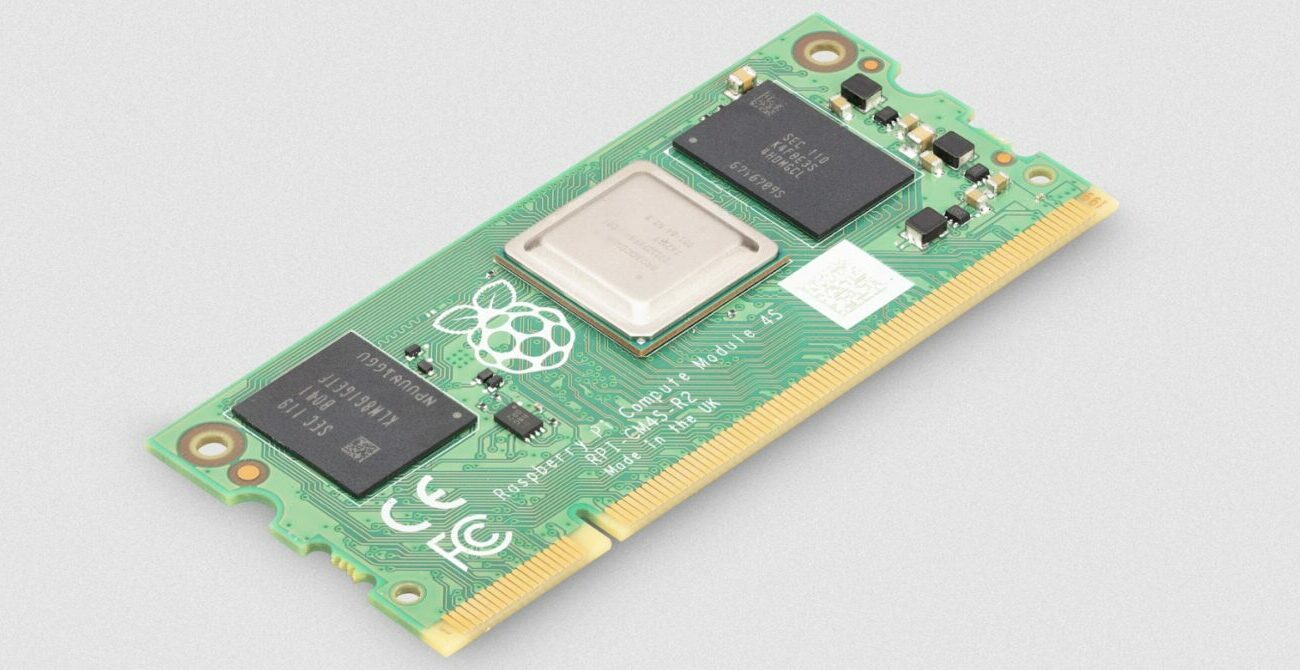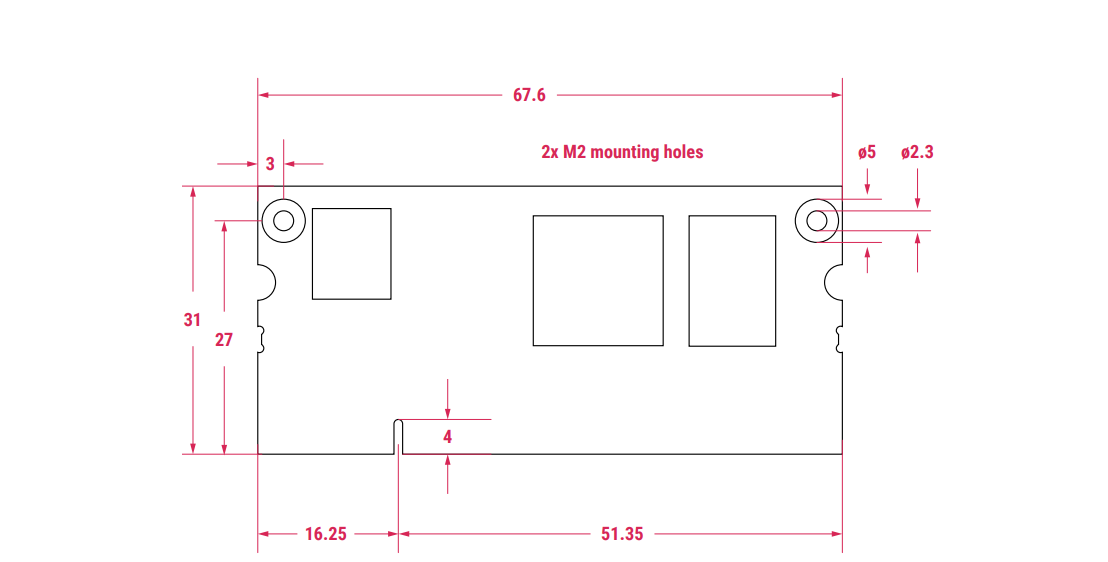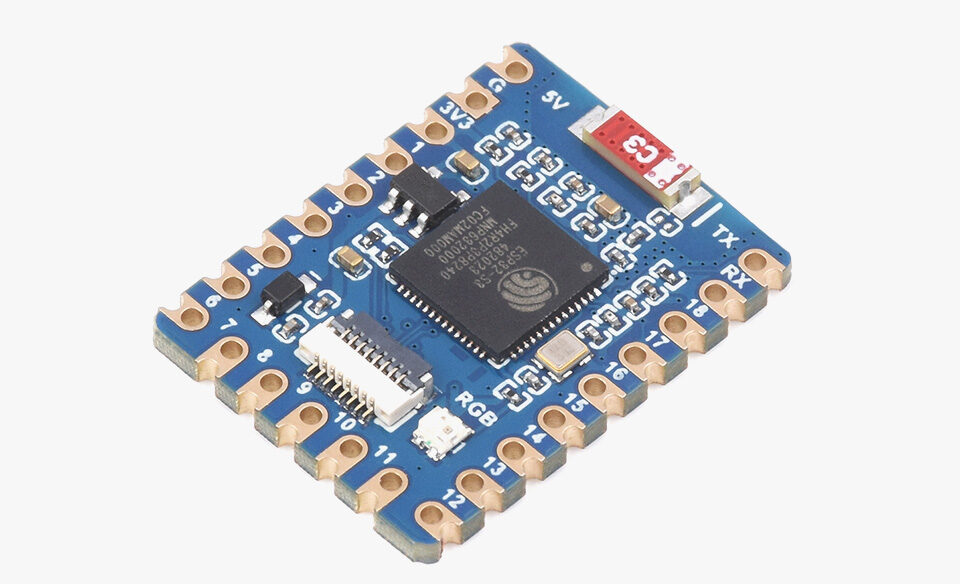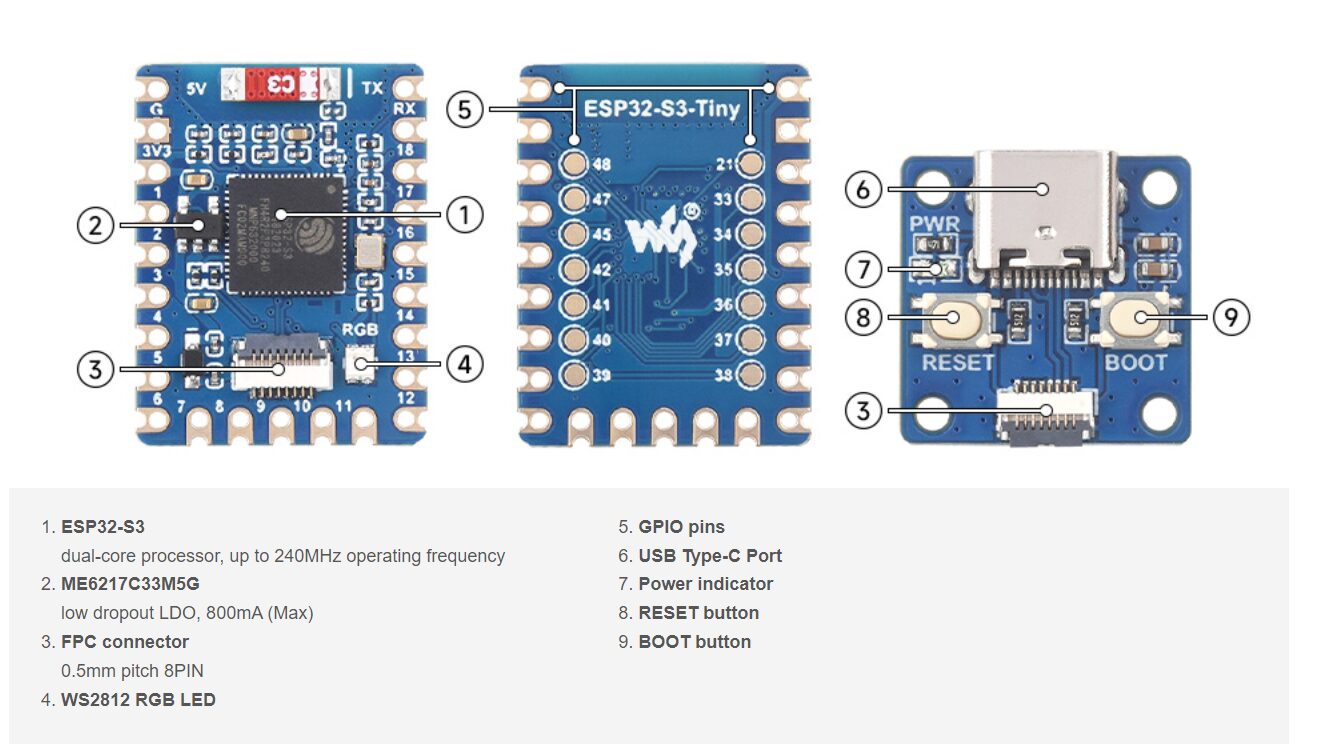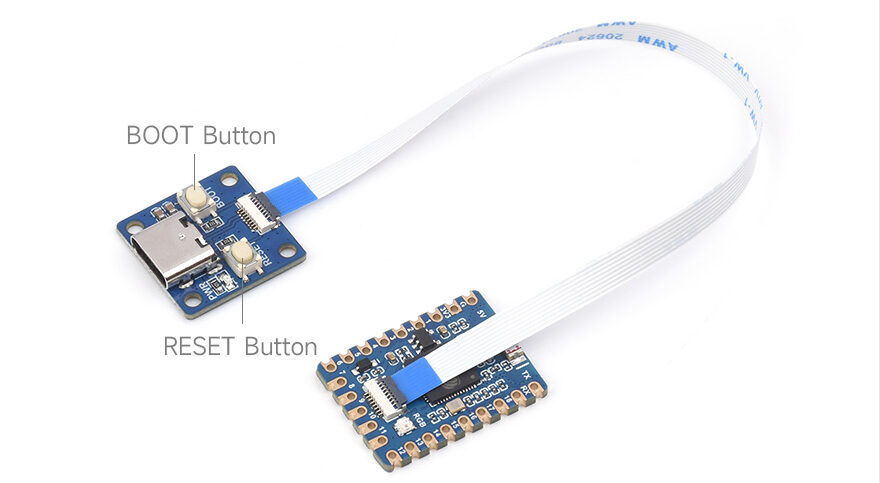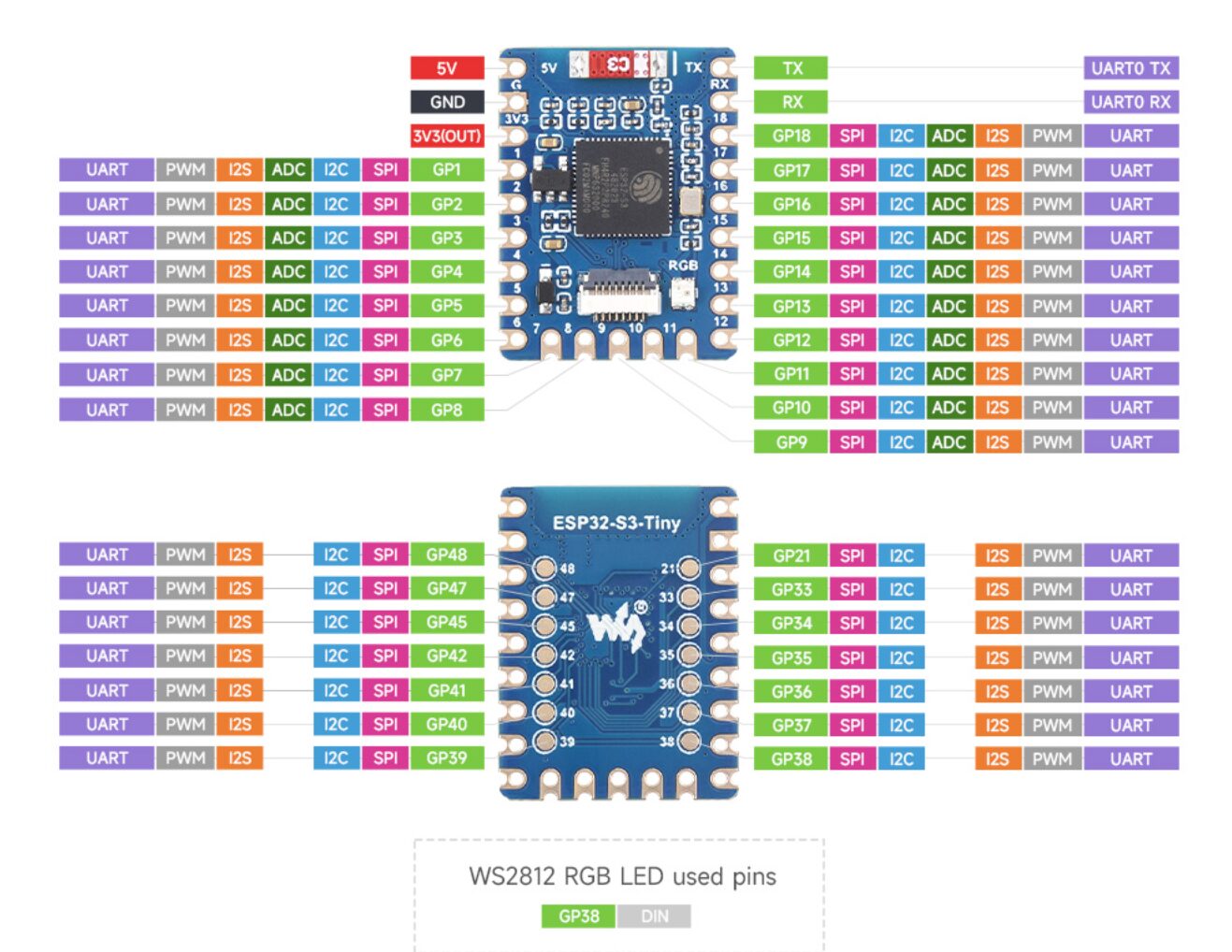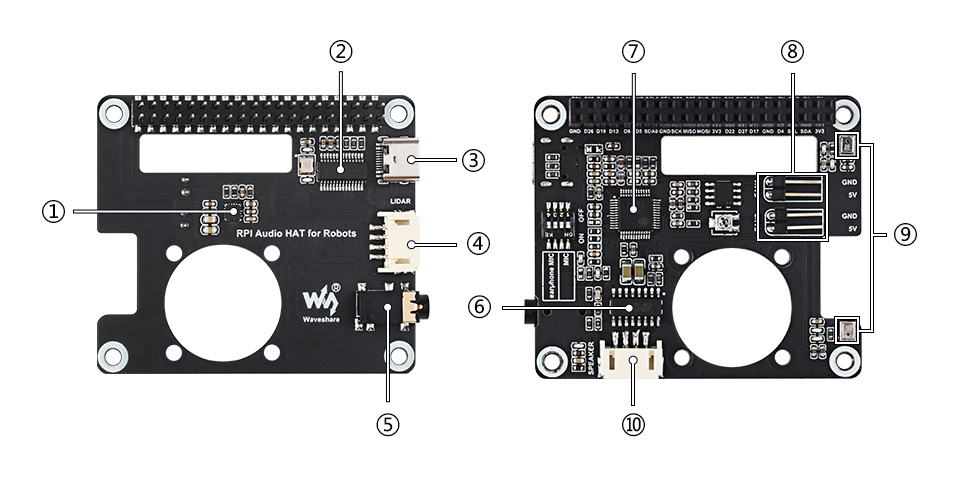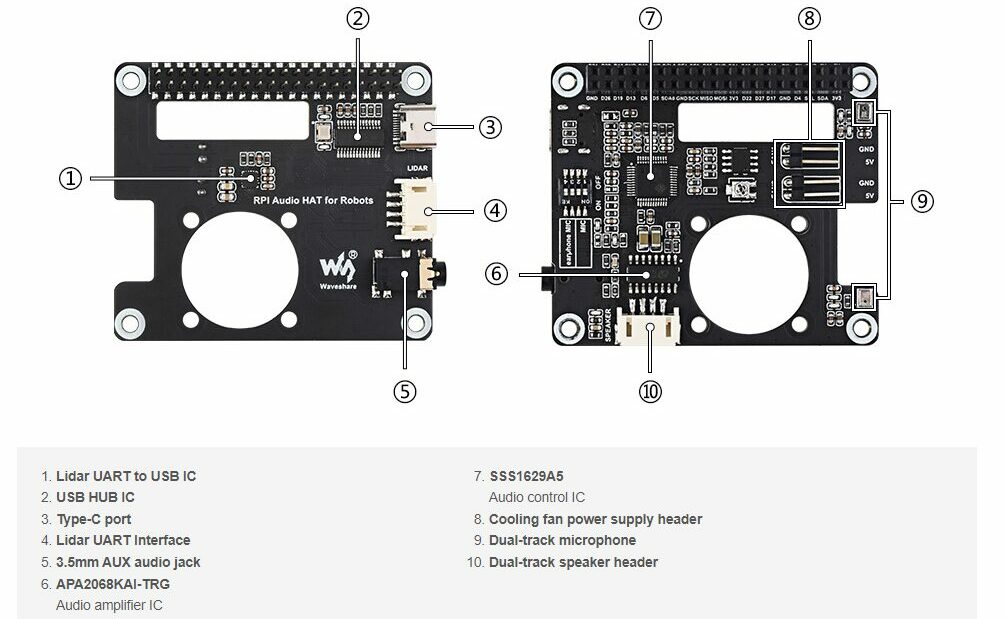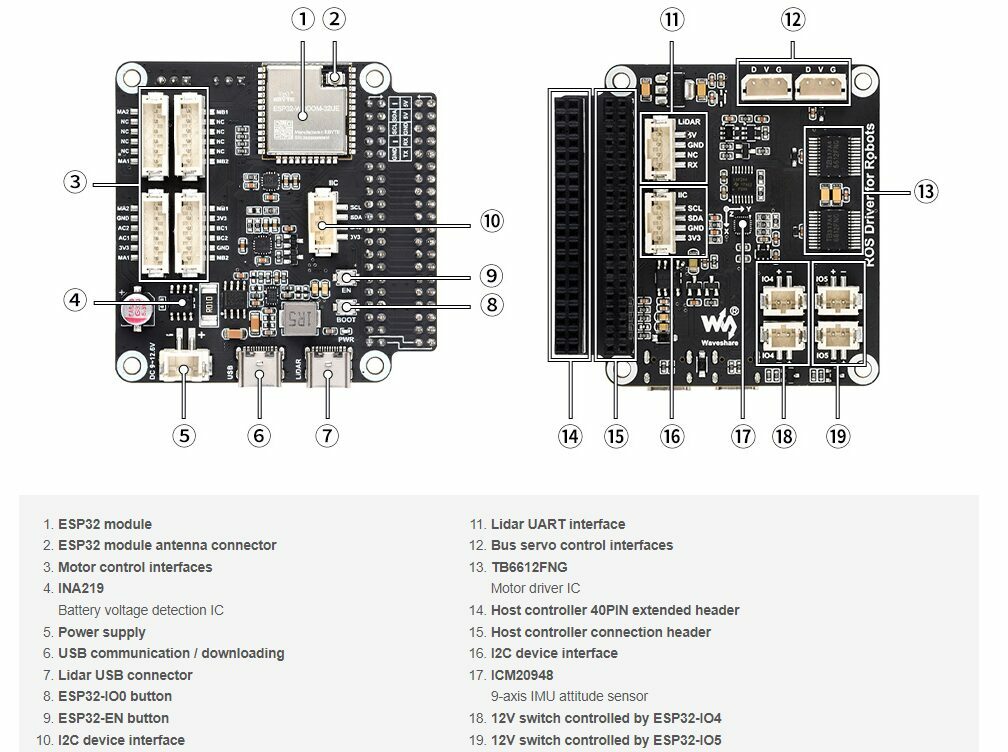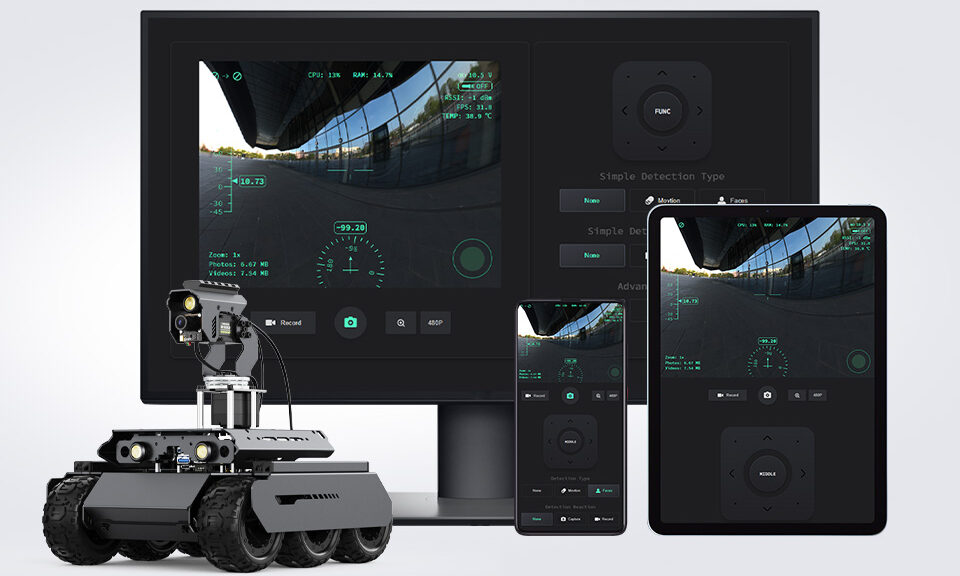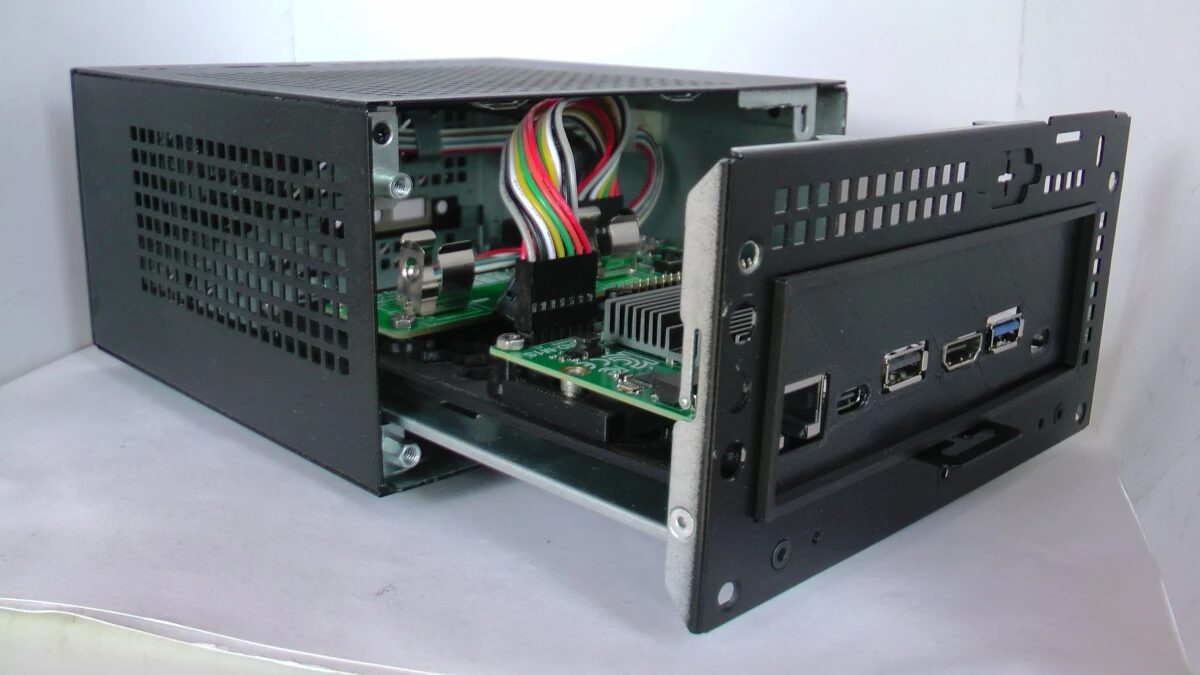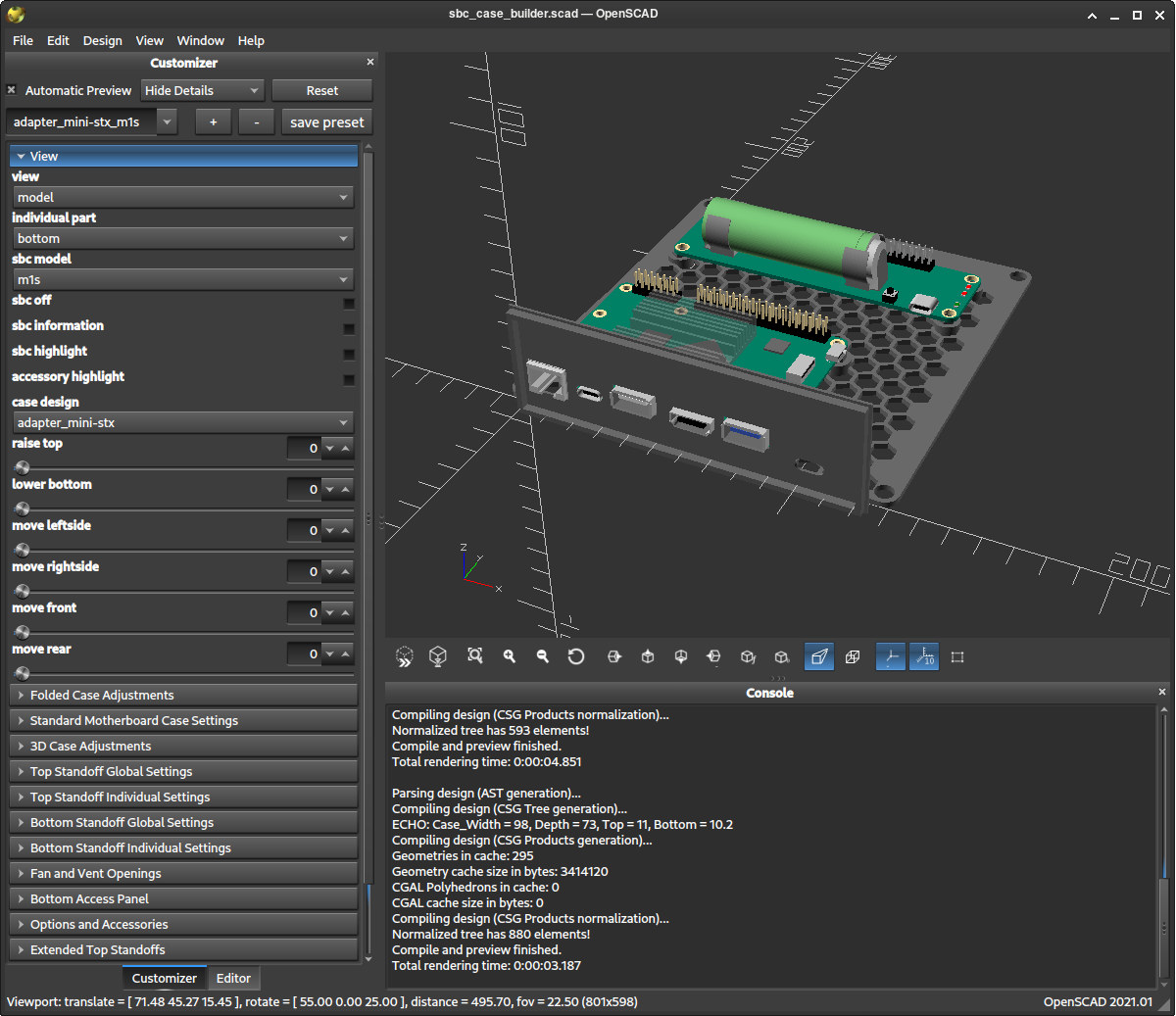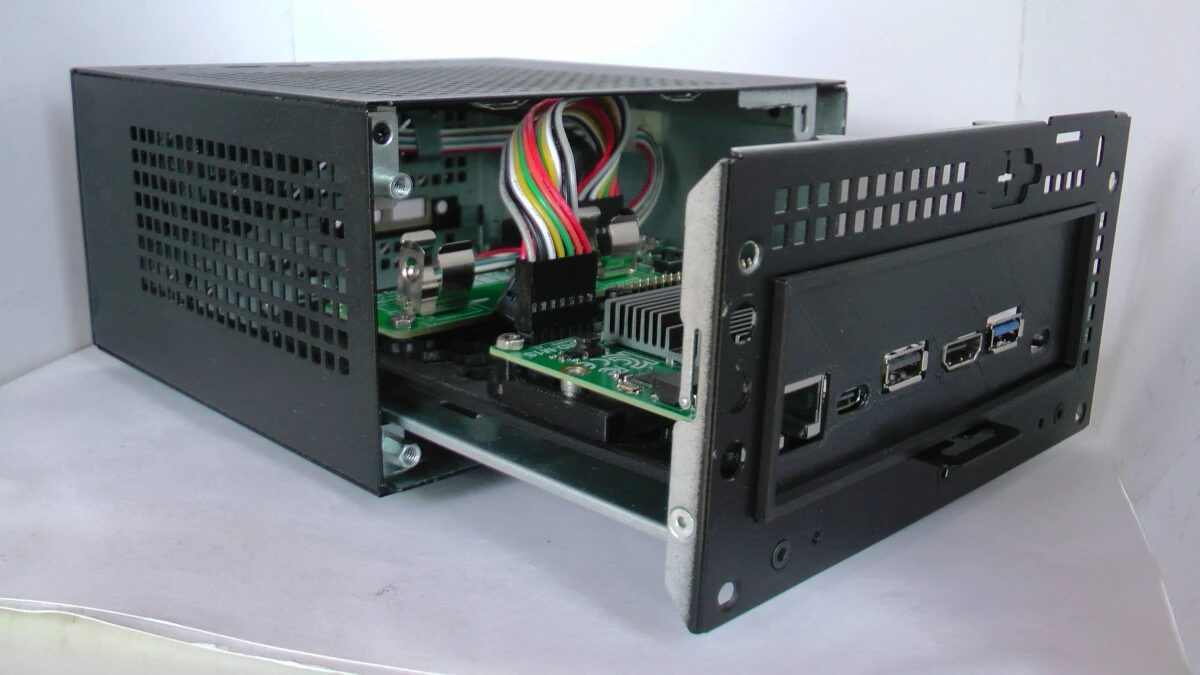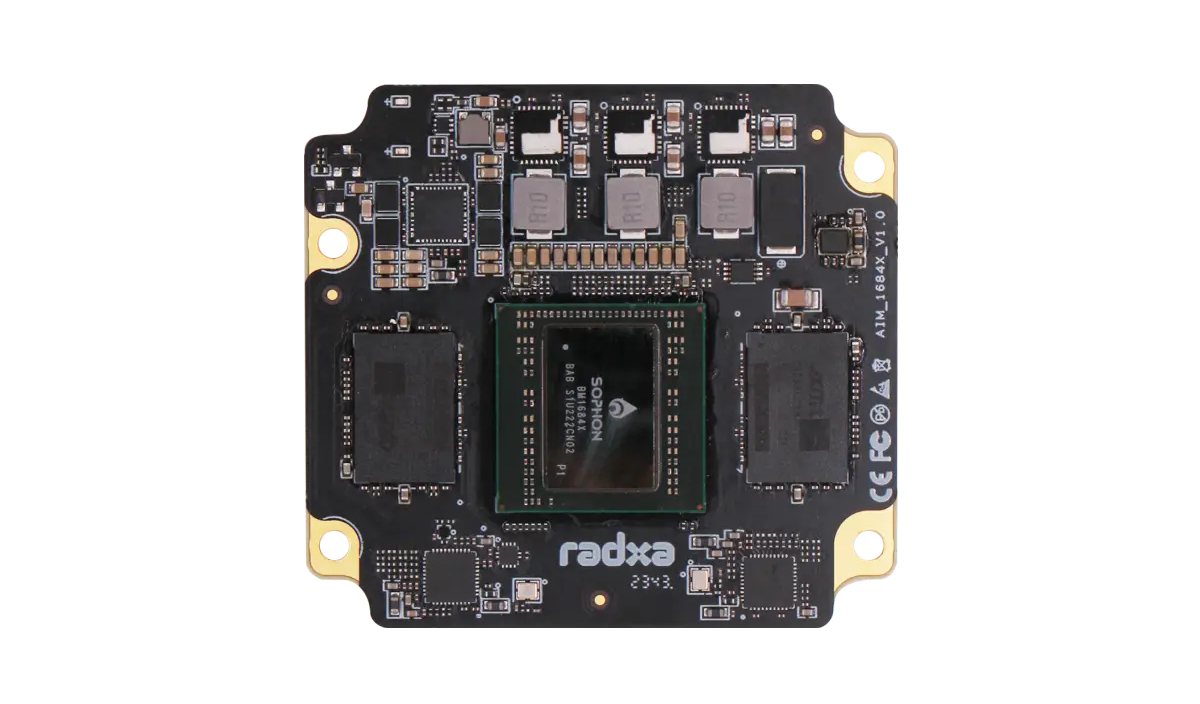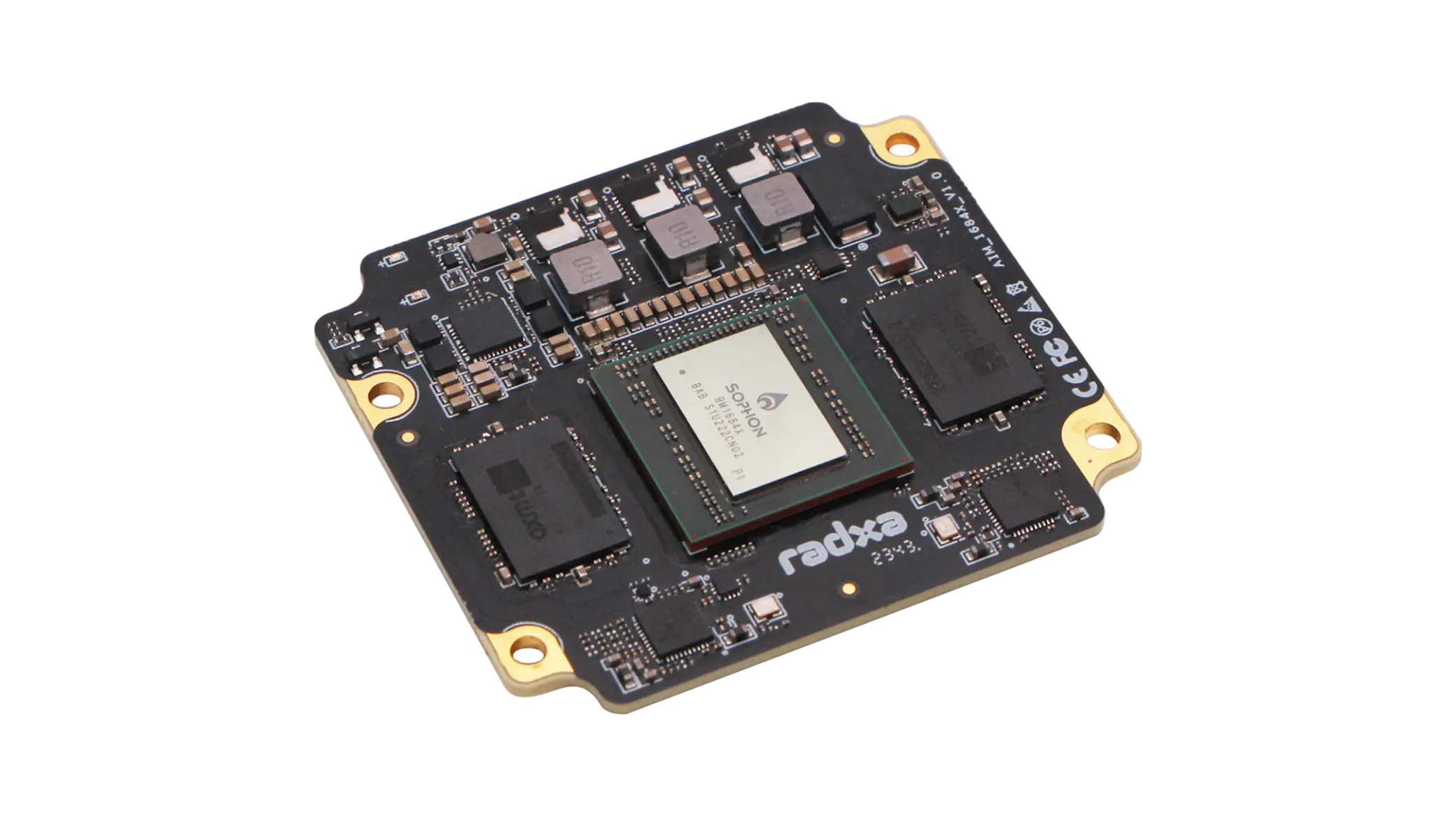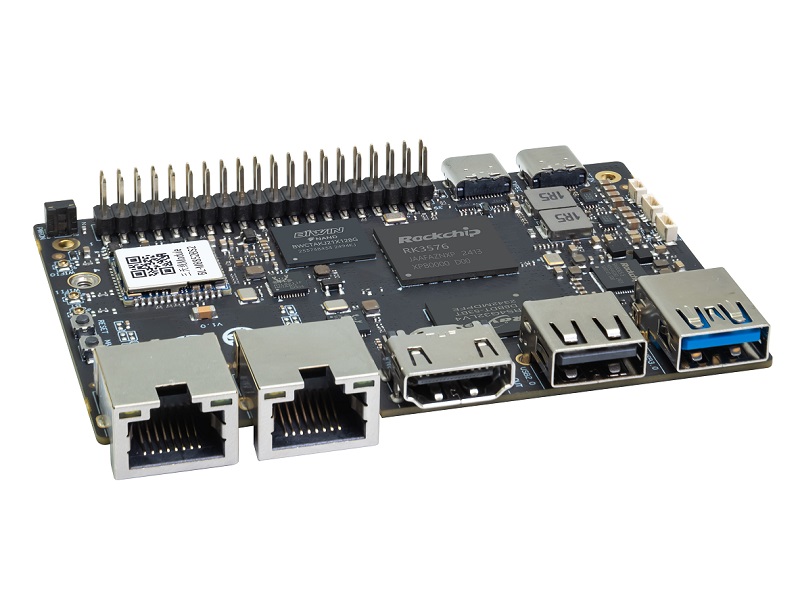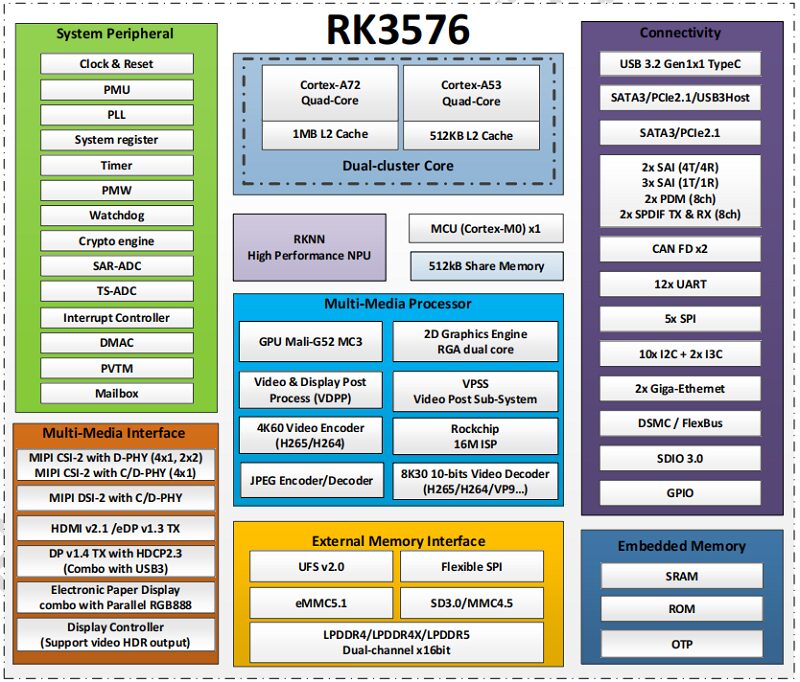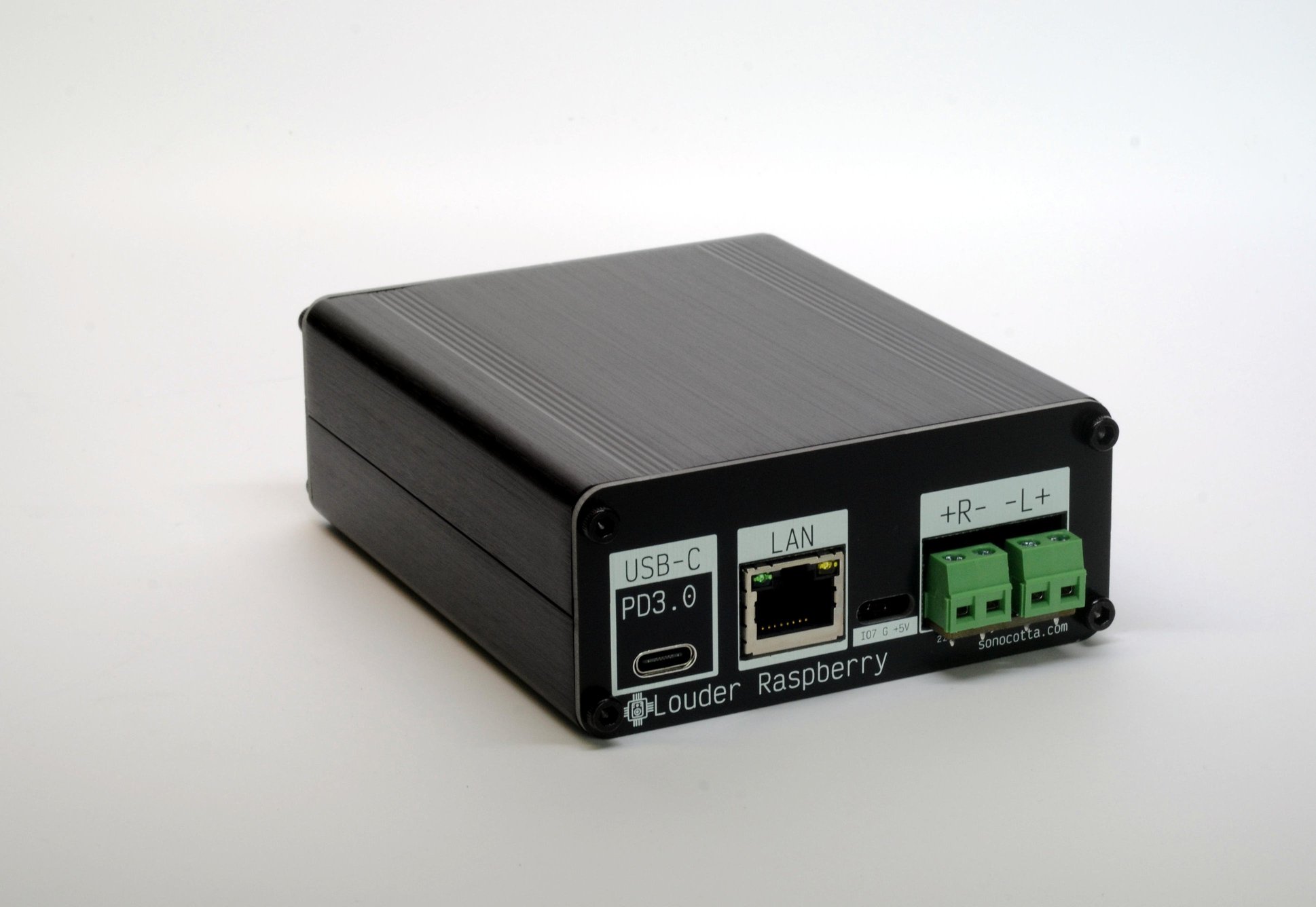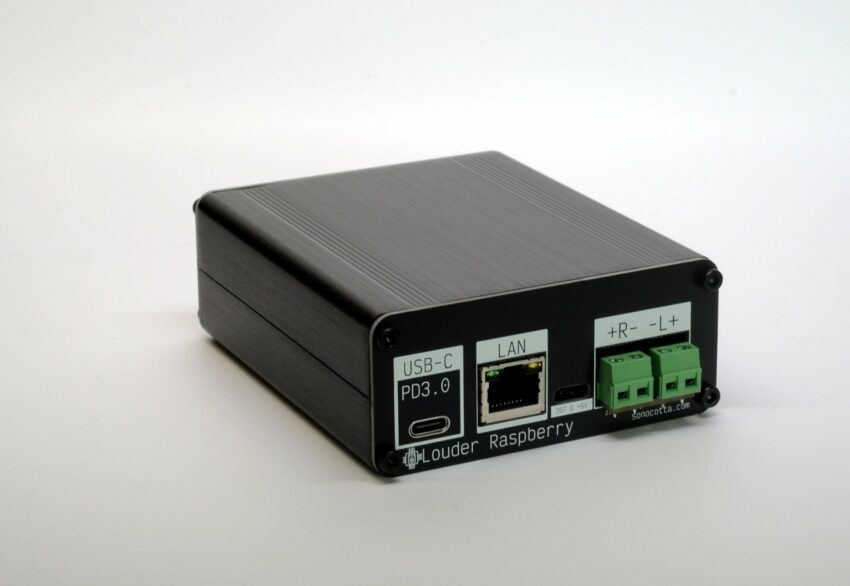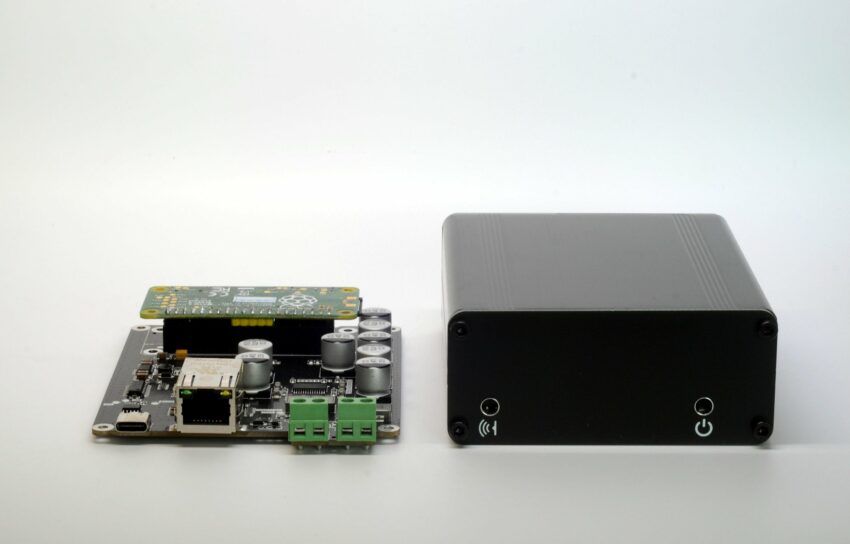MYIR has launched a new embedded System on Module (SoM), the MYC-LMX9X, based on the NXP i.MX 9352 processor. This processor belongs to the high-performance i.MX 93 family, featuring dual ARM Cortex-A55 cores clocked at up to 1.7GHz and Cortex-M33 cores running at 250MHz. It also incorporates a 0.5 TOPS Neural Processing Unit (NPU), enabling cost-effective and lightweight AI applications.
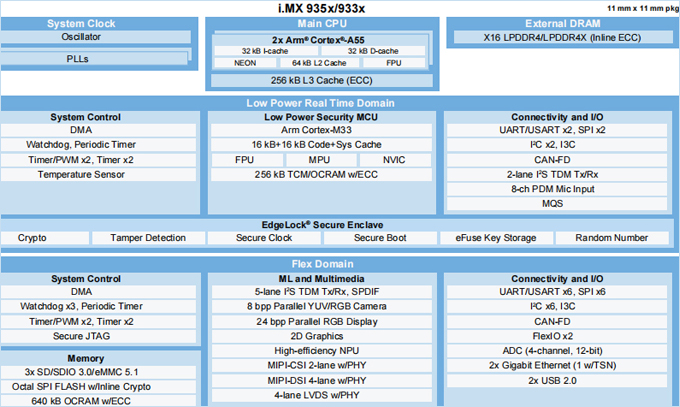
The MYC-LMX9X has a compact size, measuring merely 37mm by 39mm. In addition to the powerful i.MX 9352 CPU, it offers1GB/2GB LPDDR4 RAM, 8GB eMMCstorage, 32KB EEPROM, and a Power Management IC(PMIC), providing a robust foundation for your next embedded design. Leveraging the full capabilities of the i.MX 9352 SoC, the MYC-LMX9X supports a rich set of peripherals, including 2x USB 2.0, 3x SD/SDIO 3.01, 2x Gigabit Ethernet, 2x CAN-FD interfaces, as well as MIPI-DSI, LVDS and RGB display interfaces, and MIPI-CSI and Parallel CSI interfaces, through a 218-pin LGA expansion interface. This flexibility allows it to cater to a wide range of applications, including automotive, industrial, and consumer IoT solutions. The MYC-LMX9X is capable ofrunningthe Linux 6.1Operating Systemandincludes comprehensive software resources such as kernel and driver source code, along with detailed user manuals and documentation to expedite customer development, enabling you to bring your products to market faster.
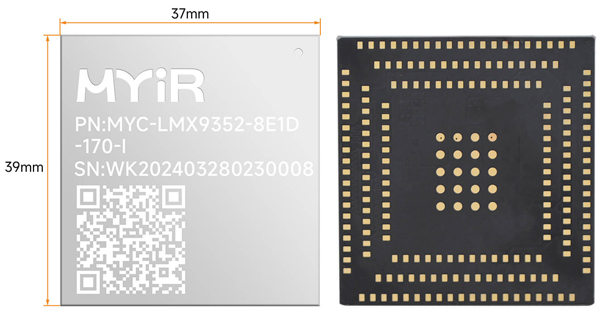
Features
Mechanical Parameters
- Dimensions: 37mm x 39mm
- PCB Layers: 10-layer design
- Power supply: 5V/1A
- Working temperature: -40~85 Celsius (industrial grade)
OS Support
- Linux 6.1.36
Processor
- NXP i.MX 9352processor
– Up to 1.7GHz Dual-core ARM Cortex-A55 CPU
– 250MHz Real-time ARM Cortex-M33 co-processor
– Up to 0.5 TOPS Arm® Ethos™ U-65 microNPU
Memory
- 1GB/2GB LPDDR4
- 8GB eMMC (supports 4GB/16GB/32GB)
Peripherals and Signals Routed to Pins
- Power Management IC (PCA9451AHNY)
- 218-pin LGA Expansion Interface
– 2x RGMII
– 2x USB2.0
– 8x UART
– 2x CAN FD
– 8x I2C
– 2x I3C
– 8x SPI
– 1x MIPI-DSI
– 1x LVDS
– 1x RGB
– 1x MIPI-CSI
– 1x Parallel CSI
– 3x SAI
– 1x SPDIF
– 4x ADC
– 1x JTAG
– Up to 87x GPIOs
Note: the peripheral signals brought out to the expansion interface are listed in maximum number. Some signals are reused. Please refer to the processor datasheet and SOM pin-out description file.
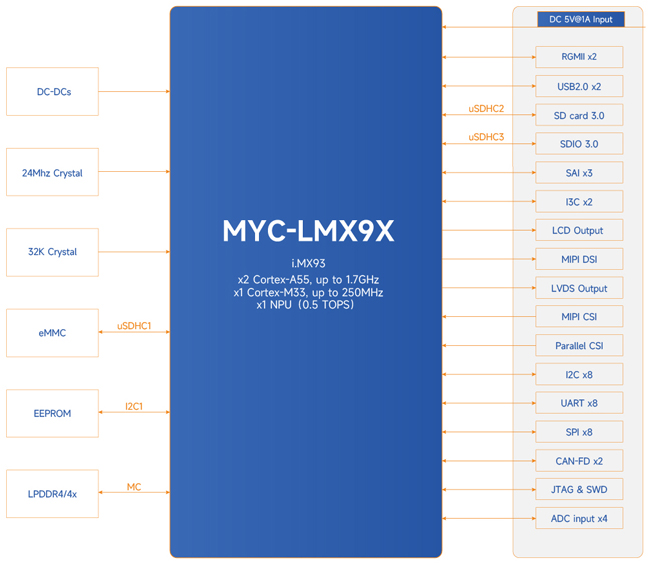
The MYD-LMX9X Development Board, built around the MYC-LMX9X SOM, offers a comprehensive range of communication interfaces on its base board. These interfaces include RS232, RS485, two USB2.0, one USB OTG, two Gigabit Ethernet, one CAN bus, a Micro SD card slot, and an M.2 Socket for USB-based 4G/5G LTE Module with dual SIM card holders. Additionally, it incorporates a USB2.0-based WiFi module, an Audio interface, a Mini-CSI interface, and multiple display interfaces including HDMI, LVDS, and RGB. The MYD-LMX9X Development Board comes with a Quick Start Guide, one USB to TTL serial cable and a 12V / 2A power adapter. MYIR also provides optional add-ons such as the MY-CAM003M MIPI Camera Module, MY-LVDS070C 7-inch LCD Module, and MY-LCD70TP-C 7-inch LCD Modulefor enhanced functionality.It serves as a robust and reliable reference design for development based on i.MX 93 solutions.
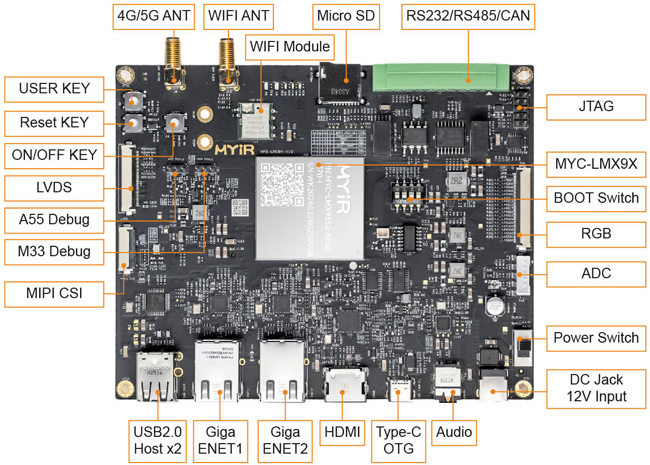
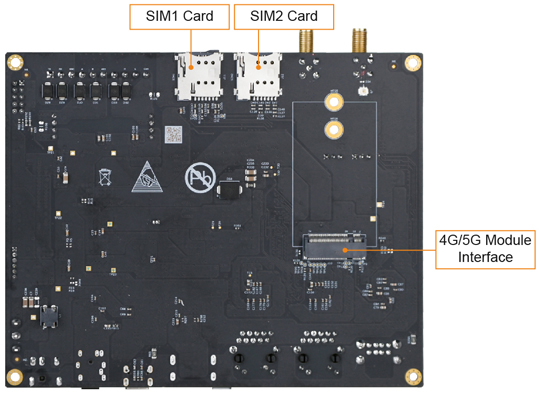
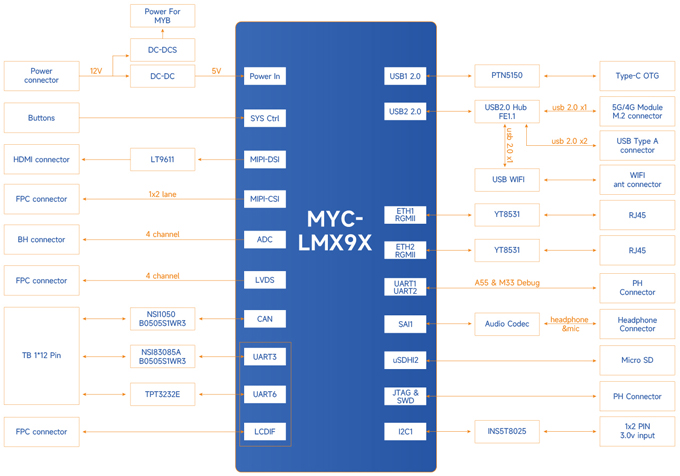
MYIR provides two standard configurations for the MYC-LMX9X, offering either 1GB or 2GB of LPDDR4 RAM to accommodate different memory requirements. Additionally, customization is available to meet specific quantity demands. The MYC-LMX9X SOMs are competitively priced, and bulk discounts are offered for cost-effective purchasing.
More information about the MYC-LMX9X can be found at: https://www.myirtech.com/list.asp?id=757

